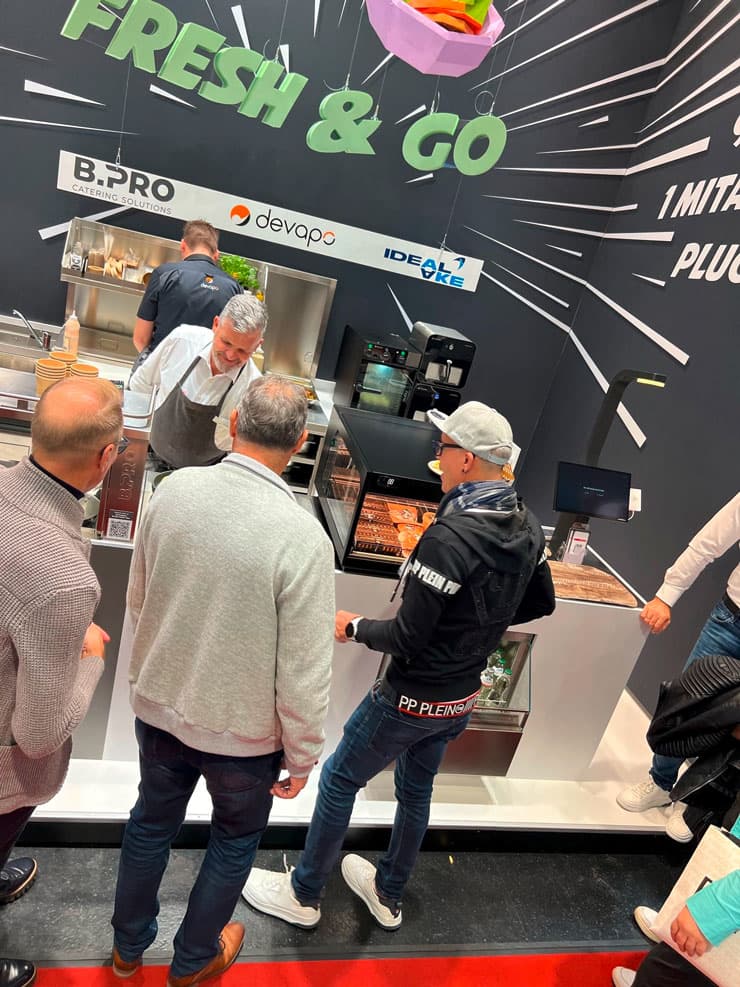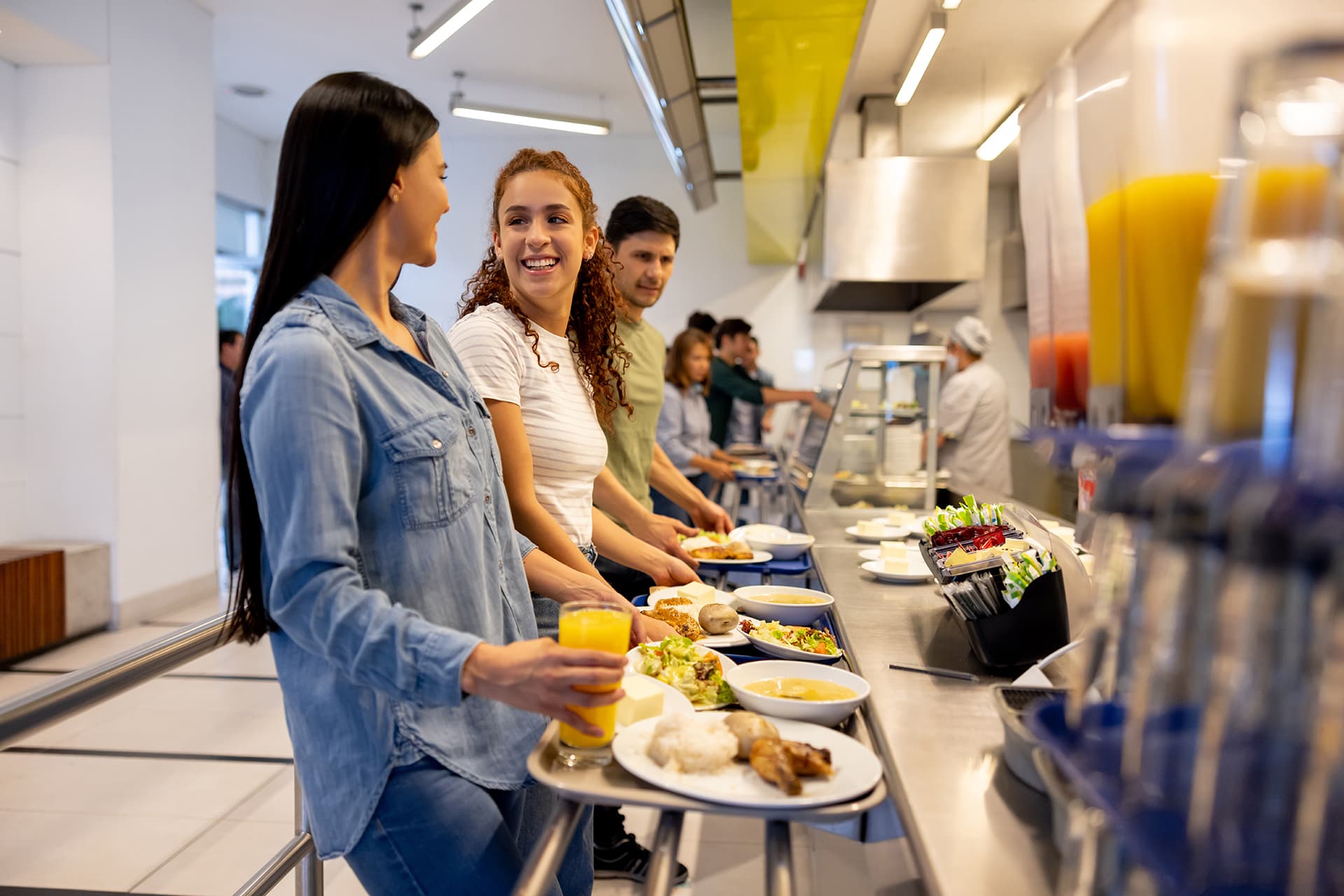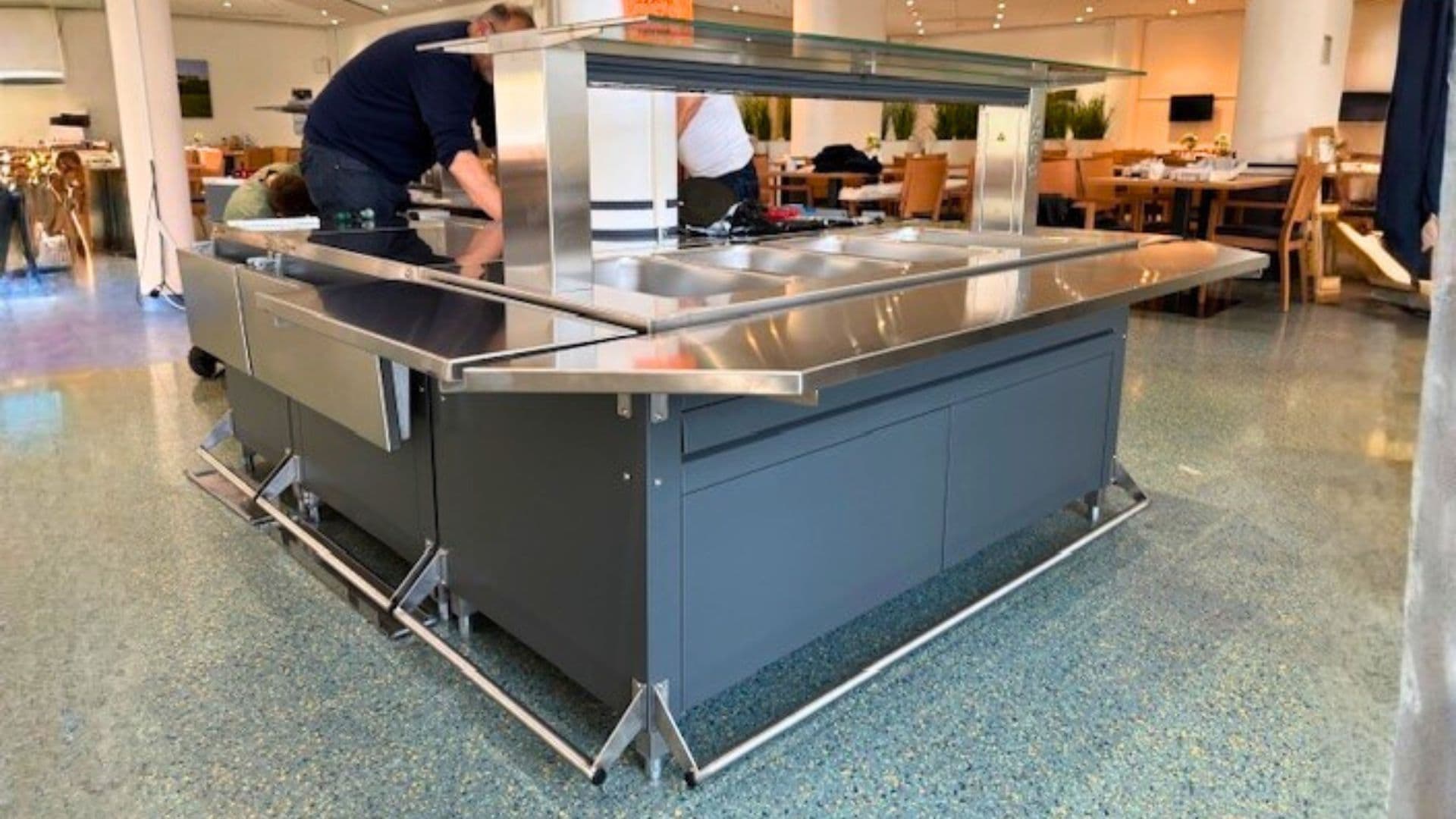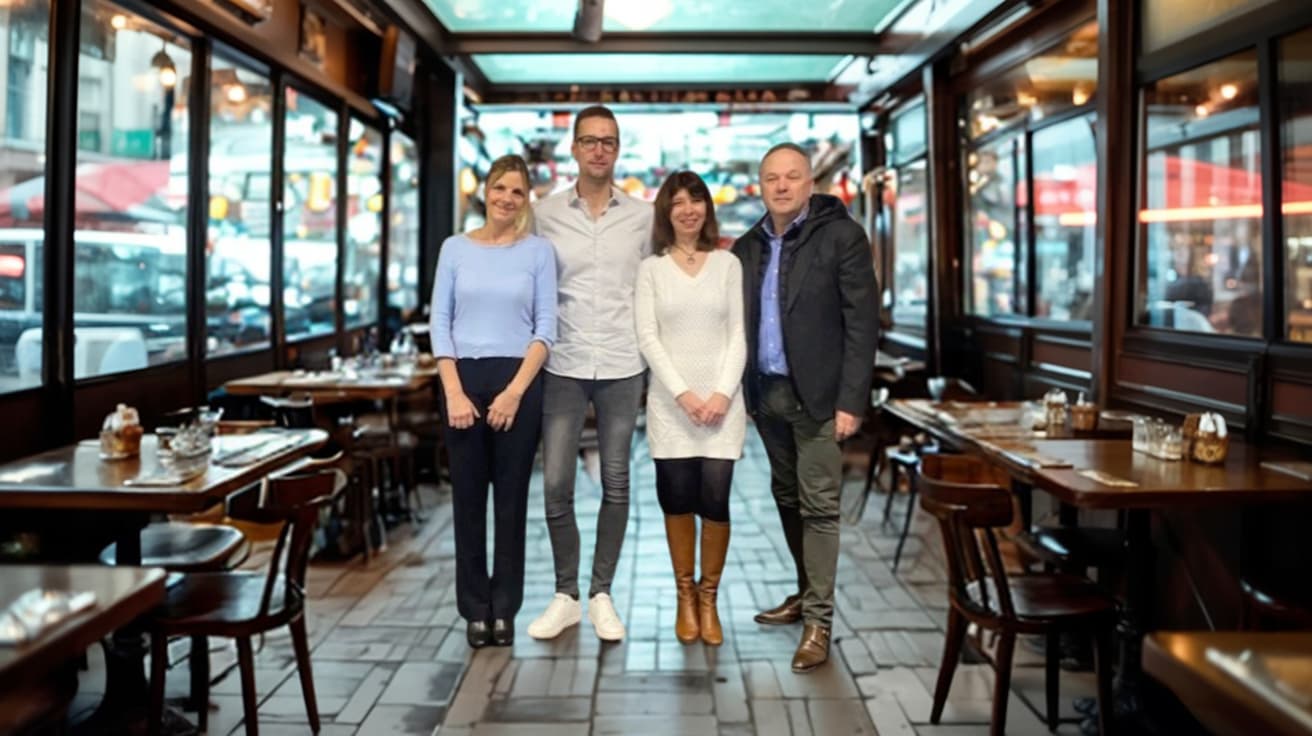
More than just food
A new break culture reveals surprising opportunities for companies
For decades, lunch hours at work offered employees the opportunity to sit down to eat together in the canteen and enjoy a well-earned break. However, alternative structures like working from home, the different demands of the younger generation and often an increasing workload have all but brought an end to the traditional break model – and with it, present new requirements and expectations for eating at work.
But what are they? And how can companies respond to them? These questions are answered in the "Global Eating at Work Survey 2023". During November and December 2022, the world's largest catering provider, the UK-based Compass Group, collaborated with a marketing agency to survey some 35,000 employees in 26 countries about their break preferences.
Lunch as an effective team-building strategy
One trend that has been gaining traction for years and was also confirmed in the Global Eating at Work Survey 2023 is that lunch breaks are becoming fewer and shorter – currently lasting an average of just 35 minutes.
In relation to Germany, this means that employees take 3.7 lunch breaks per week. And while in Portugal, for instance, people spend 48 minutes eating and drinking, relaxing, interacting with others and pursuing private interests, Germans tend to have it all done and dusted in 31 minutes.
Globally, eating is the top priority for seven out of 10 people during their lunch break. Seventy per cent of those surveyed would prefer to spend this free time with their colleagues. However, "the survey also shows that staff are more willing to socialise with colleagues if they are offered food and drink at work," explains Robbie Robertson, COO of Compass Group Germany. A huge opportunity to promote aspects like team building and cohesion. Remarkably, this willingness to socialise increases with the range on offer – the more varied the food, the more likely people are to socialise. So what's the problem? Just 31% of respondents' companies have a company restaurant. Many survey participants also highlighted a lack of suitable spaces to take a break and relax.

Different age groups, different requirements
The latter are particularly important for Millennials and Generation Z. After all, the younger employees are, the more likely eating becomes just one aspect of the overall break culture. Younger workers want an environment in which they can properly relax, socialise with colleagues and perhaps even pursue other interests and hobbies. In such cases, bistro or take-away concepts can offer a suitable solution.
“Generally speaking, different age groups have different expectations and requirements when it comes to taking breaks at work,” agrees Robbie Robertson. But this presents companies with the opportunity to impress as an attractive employer with a range of different break options.
Breaks have multiple benefits
As an essential part of the working day, breaks are regulated by the German Working Hours Act (ArbZG) for a reason. This is also confirmed by the Global Eating at Work Survey 2023. A total of 78% of participants pointed out that breaks make them more productive.
“Even if it might seem counter-intuitive, high-quality break time is hugely beneficial for employees and employers alike, as they have been proven to improve productivity, collaboration and mental health,” highlights Shelley Roberts, Group Chief Commercial Officer of the Compass Group.

Boosting employee satisfaction
Since the top priority during breaks is food, this is where companies have the greatest potential to increase employee satisfaction.
After all, currywurst and schnitzel aren't exactly top of the menu in professional kitchens these days. Although vegetarian or vegan options, organic certifications and sustainable food production or supply are often statutory requirements, in most cases, they also reflect the increased demands of consumers. How food is prepared and presented also has a major influence on how well “canteen food” is accepted.
Automation and digitisation in commercial catering
Nevertheless, it is important to remember that especially for Germans, efficiency is order of the day when it comes to eating. After all, if breaks are just 31 minutes long, no one wants to spend ten minutes of them queuing for food. “It is important for us to draw the right conclusions from this and optimise the employee experience in the company restaurant as much as possible,” states Robbie Robertson. This includes offering a wide selection of snacks for those in a hurry and digital solutions for pre-ordering.
Automation and digitisation also have other unparalleled advantages: They can effectively counteract factors such as staff shortages, increased costs and the effects of inflation – challenges faced by many managers in workplace catering today.
B.PRO – efficient solutions for canteens and company restaurants
Automation and digitisation also represent two core pillars in the B.PRO GmbH future strategy. The third pillar involves the optimisation of the product portfolio through in-house developments, subsidiaries and partner companies in order to ensure that all requirements are met – for example in workplace catering.
B.PRO helps its customers to plan their company catering from the outset or to optimise existing tructures. The aim: lower running costs, more efficient use of staff, short routes, time-saving processes, all in an environment that puts employee comfort first.
Cutting-edge food serving systems like the BASIC LINE in four equipment variants combine aesthetics, material and design to guarantee a special culinary experience. Front cooking stations from the Cook family not only cook up a storm, but create optical highlights too. Automation that can be used behind the scenes includes food distribution conveyors, the CPM-600 cutlery packaging machine or the B.PRO THERM food transport containers which, thanks to the smart QMSpot quality management software, ensure the digital control of cooling chains and temperature data. And last but not least, it goes without saying that B.PRO offers a comprehensive range of catering accessories to cover all requirements – from the intelligent B.PRO Servistar plate holder to clearing trolleys and Gastronorm containers.

Hot topic: the new Fresh & Go concept by B.PRO
The appetite for all-day hot food to go is growing. But how can a company meet this demand from employees if space or cost restrictions make it impossible to have a company restaurant at all?
In collaboration with experts at Devapo and IDEAL AKE, B.PRO has developed the modular Fresh & Go solution. This impressive catering concept unites production, finishing and presentation with sophisticated functionality in a compact space.
Conclusion: Modern workplace catering calls for courage – and strong partners
The Global Eating at Work Survey 2023 has revealed that workplace catering is a key component in employee satisfaction. However, in order to achieve this, companies need to provide a varied and high-quality offer. Like every change, this initially comes as a challenge - but in it lies great opportunity. After all, companies that study the insights gained and implement them in collaboration with strong partners not only position themselves as an attractive employer, but also boost employee productivity in the long run.
B.PRO would be delighted to accompany you throughout this process. Would you like further information? Contact us here:
 Better together
Better togetherA recent Circana study shows: Commercial catering is holding its own even in difficult economic times. Find out what is behind this – and how B.PRO supports those in charge – in the blog.
 Reference B.PRO - VAMED Klinik Hagen-Ambrock
Reference B.PRO - VAMED Klinik Hagen-AmbrockThe hospital VAMED Klinik Hagen-Ambrock needed a new food serving line to enable patients in wheelchairs to participate in the food serving process. Regional Sales Manager Sven Nowacki reveals how it was possible to make this wish a reality within just a few weeks and without any construction work.
 A portrait of B.PRO France
A portrait of B.PRO FranceHow does B.PRO work in one of the most demanding markets in Europe? General Manager Daniel Rewell offers insights into key product focuses, customer structures and the most important development topics.
